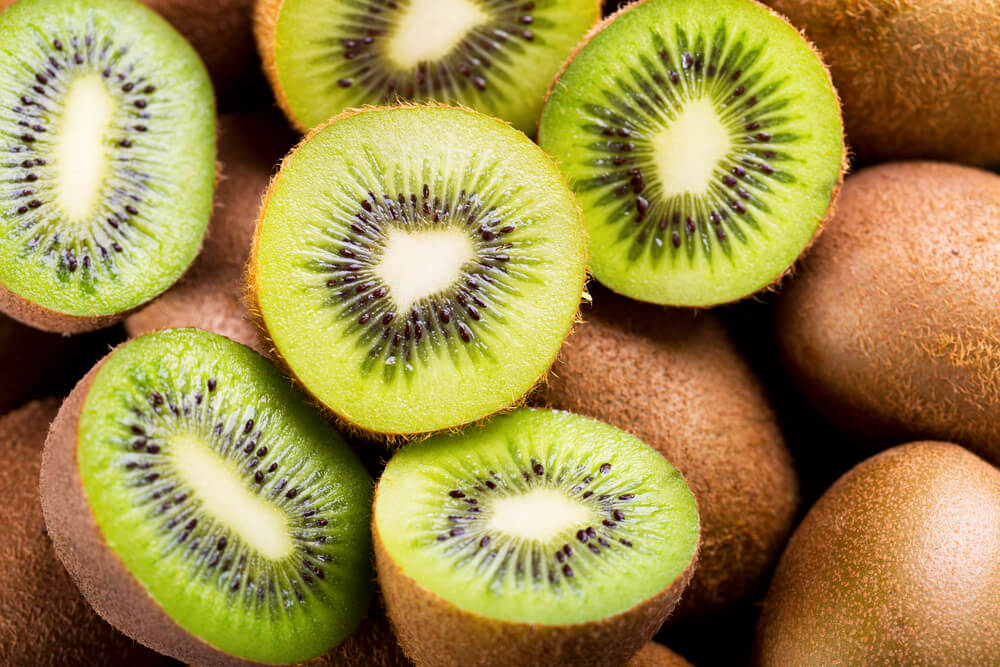Kiwi is a delicious fruit that is packed full of vitamins and nutrients. Like many fruits, it can quickly spoil if not eaten soon enough.
Freezing is a great way to preserve food, but can you freeze kiwi?
Many people freeze fruit to use in smoothies. However, freezing can be difficult without proper preparation due to the high moisture content of kiwis. Read on to learn more about how to freeze kiwis correctly.
What is Kiwi?
How Long Do Kiwis Last

You can tell a kiwi is ripe if you press your thumb on the outside. If the skin gives to light pressure, the fruit is ready to eat. If the skin is firm, the kiwi is not ripe. Unripe kiwi has a hard texture. To encourage ripening, place the kiwifruit in a vented bag with a banana.
Kiwis will only stay fresh at room temperature for a few days. You can extend their shelf life up to four weeks by keeping them in the refrigerator. But many people struggle to eat all the kiwis they buy before they go bad. Can kiwi be frozen to avoid this?.
How to Freeze Kiwi
Peel and Slice Your Kiwi
First, check that your kiwi is ripe. It is crucial to preserve kiwifruit in optimal conditions. If the fruit is still hard, wait for it to ripen before freezing.
Begin peeling your kiwi by first slicing off the stem. This cut will expose the fruit underneath. Use that entrance to place a spoon under the kiwi’s skin. Then, use the utensil to push the skin up without removing chunks of the fruit itself.
After you’ve peeled the kiwifruit, cut it into multiple slices. Thickness depends on your personal preference. By cutting the kiwi ahead of time, you avoid the swelling and tearing in frozen whole kiwis.
Prepare Freezer Tray
Use a flat tray baking sheet covered in parchment paper to hold your kiwis. Place the slices on the sheet without them touching each other.
You can coat the kiwis in white sugar to help preserve their color and flavor if you like. However, this is not the healthiest preparation option.
Finally, cover the kiwi slices with another piece of parchment paper. This coverage will help keep moisture in the fruit while frozen. Press the form down, so there is no space between the fruit and the sheet.
How to Store Kiwi in the Freezer
Make sure you have a flat space in your freezer large enough for the baking tray. Place the slices in the freezer on the tray until completely frozen. This process can take anywhere from 4 hours to one day. Only remove the tray when kiwis are firm.
You can then transfer the frozen kiwi into a freezer-safe bag. Use an air-tight container to limit air exposure in the freezer.
How Long Do Kiwis Last in the Fridge?
Properly frozen and stored kiwi slices will keep in the freezer for up to 12 months. However, the sooner you use them, the better they’ll taste.
Remember to check the fruit every month for signs of mold or spoilage.
Thawing Frozen Kiwis
It is possible to defrost frozen kiwi slices by letting them sit in the refrigerator for about an hour. However, thawed kiwi is generally very mushy.
The best uses for frozen kiwis do not require them to thaw. You can use your kiwi slices in smoothies, drinks, and tarts. A berry and kiwi smoothie is a great way to use kiwi that you have preserved by freezing. This recipe is a delicious combination of kiwis, blueberries, and strawberries.

How To Tell If Kiwi Is Bad
Other visual signs of spoilage include a shriveled and dry outer skin. Ripe kiwi is visibly plump. But the rotten kiwi has little juice left in the pulp, making the inside appear dry as well.
You can also check the kiwi for mushy patches without having to cut the fruit. Although ripe kiwi gives slightly to pressure, spoiled fruit will feel overly mushy. There may even be visual wet patches on the skin.
Health Benefits of Kiwi
The high vitamin C content of kiwis can even potentially help improve the lung health of asthma patients. Vitamin C also boosts your immune system and may help reduce the risks of cold-like diseases.
Several bioactive substances in kiwi may help lower blood pressure and reduce clotting when consumed regularly. And a high level of zeaxanthin and lutein can help protect eyes from macular degeneration.
Final Verdict
Can you freeze kiwi? Yes, but thawing a frozen kiwifruit often creates an unappealing mushy texture.
When correctly prepared before freezing, frozen kiwi slices make an ideal addition to smoothies and drinks. This fruit is an excellent source of essential vitamins that help boost overall health, and freezing can make it easier for most people to incorporate kiwi into their diet.
Experience the health benefits of this delicious superfruit for yourself by freezing kiwi slices today to provide healthy snacking for months.
Related Articles:







